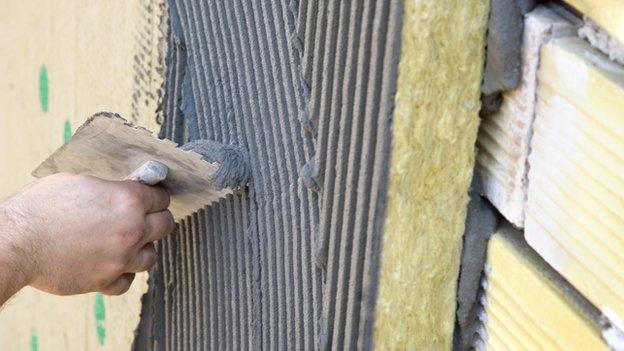Residents' fight against cavity wall insulation issues
- Published
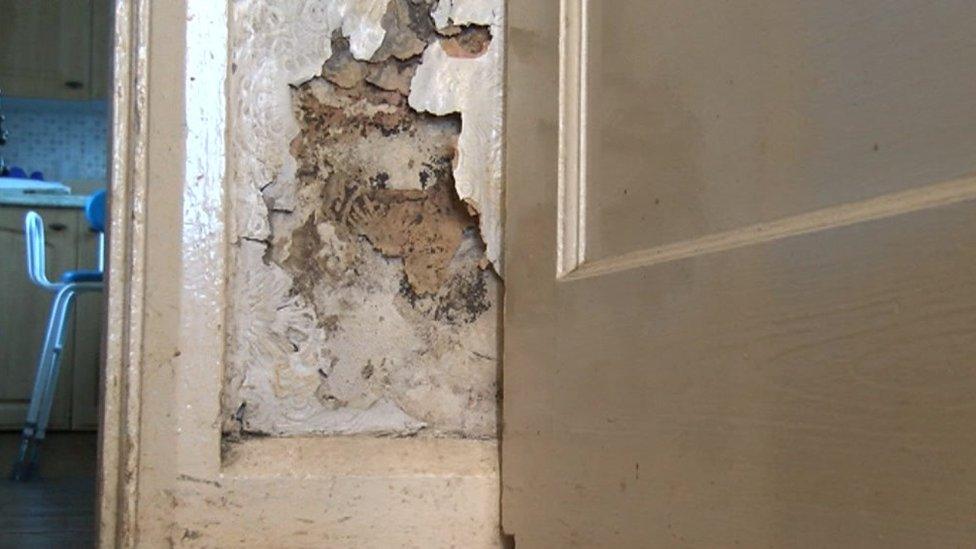
Damp wall inside Kenneth Bowen's house in Hawthorn, Pontypridd
When Kenneth Bowen had cavity wall insulation fitted at his house in Rhondda Cynon Taff, he thought it would make his home warmer.
Instead, cracks appeared in the walls and damp spread through the property. His experience is not unique.
Tens of thousands of homes across Wales had the insulation retrofitted in the last decade as part of a government-led drive to cut energy use.
Assembly Members discussed the problem in the Senedd on Wednesday.
If installed incorrectly, or in unsuitable properties, cavity wall insulation (CWI) can lead to damp.
Mr Bowen, from Pontypridd, said he had CWI installed for free under a energy saving scheme seven years ago.
"About a year or so later, cracks started to appear," he said. "The brickwork was coming out and, in fact, you could see the cavity."
He said things were "deteriorating" in his house with damp, mould and peeling wallpaper.

Kenneth Bowen's spent years trying resolve the issue
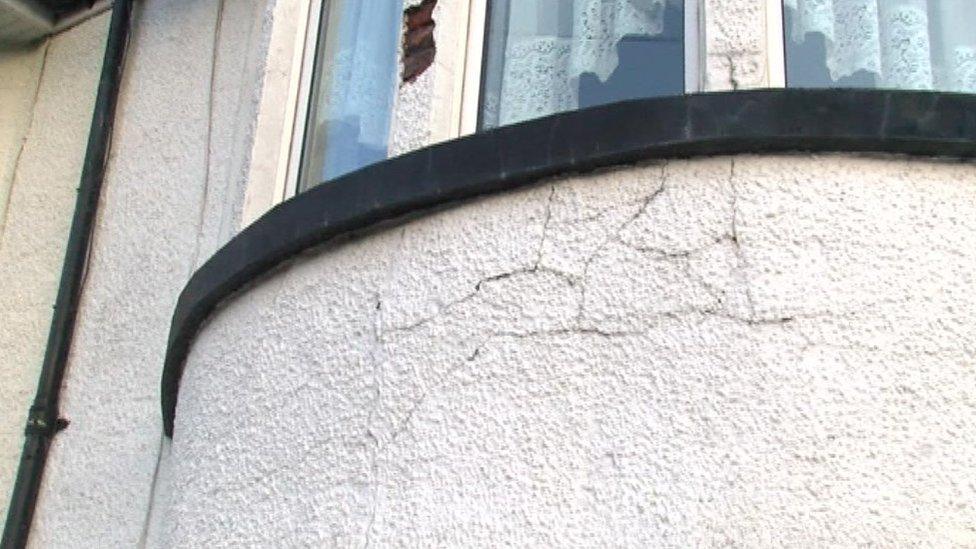
Cracks in the outside wall of Mr Bowen's house in Hawthorn, Pontypridd
Mr Bowen said that although the Cavity Insulation Guarantee Agency (CIGA) told him his guarantee was for 25 years, five surveyors who came to view the property all gave him a different reason for the problems.
He said the material had now been removed, despite initially being told he would need to pay to have that done.
"It's very frustrating," he said.
Christopher Gray, also from Pontypridd, had CWI installed in 2004.
"About two years later I started getting damp and it just gradually got worse and worse over the years," he told BBC Radio Wales' Good Morning Wales programme.
"There were voids in the cavity wall insulation which was causing cold spots on the walls, which caused condensation to form on the walls, causing the damp and the mould. Also I had penetrating damp."

But he said he had to keep complaining to the CIGA for another three years after it agreed, then denied, that the insulation was defective.
In 2016, CIGA agreed the CWI was to blame - and said they would cover the cost of removal - but would not pay for repairs to the house.
But Mr Gray took his case to the Centre for Effective Dispute Resolution and won.
Labour AM Mick Antoniw said he called for the Senedd debate after spending years listening to problems from constituents.
"It is about exposing the fact that we have one enormous scam going on," he said.
"Three-quarters of Wales is not suitable for CWI but they are the areas being targeted," he said.

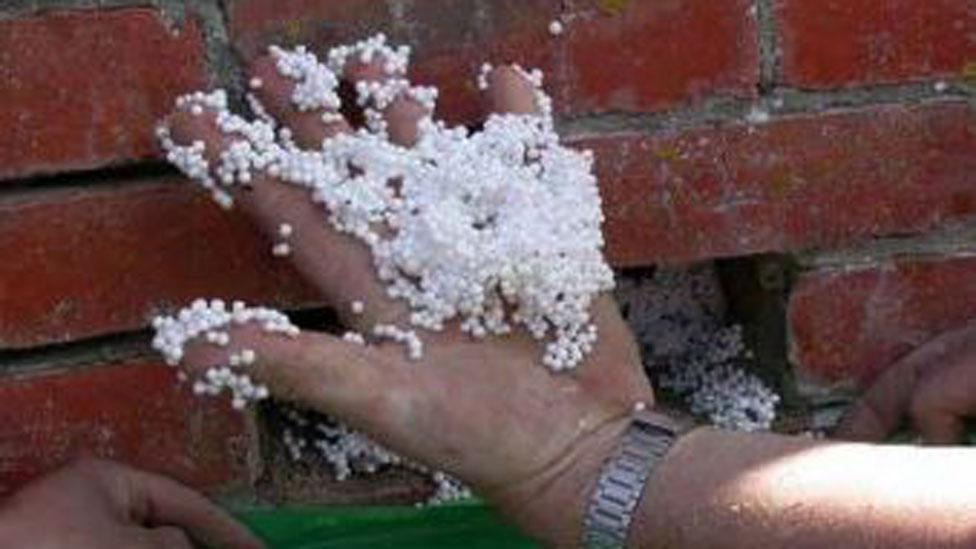
An example of saturated insulation included in a report to the Welsh Government by BRE
Does Wales have the right climate for Cavity Wall Insulation?
Building Research Establishment (BRE) divided the UK into driest and wettest areas known as Exposure Zones in its report to the Welsh Government.
Most of Wales is in the wettest area - Exposure Zone 4.
BRE warns of the problems installing cavity wall insulation in Zone 4 because of the increased risk of rain penetration if a cavity is fully filled with insulation.
Unless it is done properly, rain can penetrate the outer wall and get the insulation wet.
It then transfers moisture to the internal walls causing damp problems.

Despite the complaints and a report to the Welsh Assembly highlighting the problems, it is still being offered to homeowners in Wales through various energy saving initiatives.
Earlier this year, the Welsh Government announced funding of £104m for its Warm Homes programme to increase the energy efficiency of up to 25,000 homes across Wales - covers CWI installations.
A Welsh Government spokesman said CWI was sometimes installed under its Nest and Arbed schemes, but this was based on "a whole house assessment survey to determine the most appropriate measures".
He added: "We are aware of a small number of complaints relating to Welsh Government-funded schemes, however the majority of complaints in Wales relate to energy supplier schemes.
"In October we strengthened the requirements for competent person schemes responsible for cavity wall insulation in Wales to reduce unsuitable installations and identify bad practice."
Pauline Saunders, from Newport, started pressure group Civalli (Cavity Insulation Victims' Alliance) after battling to get her own insulation removed.
Since then, more than 1,000 people have contacted her to help with their problems of botched installations.
She takes calls from all over the UK but said most of the people she helps are from south Wales, adding: "The stories I get are horrendous."
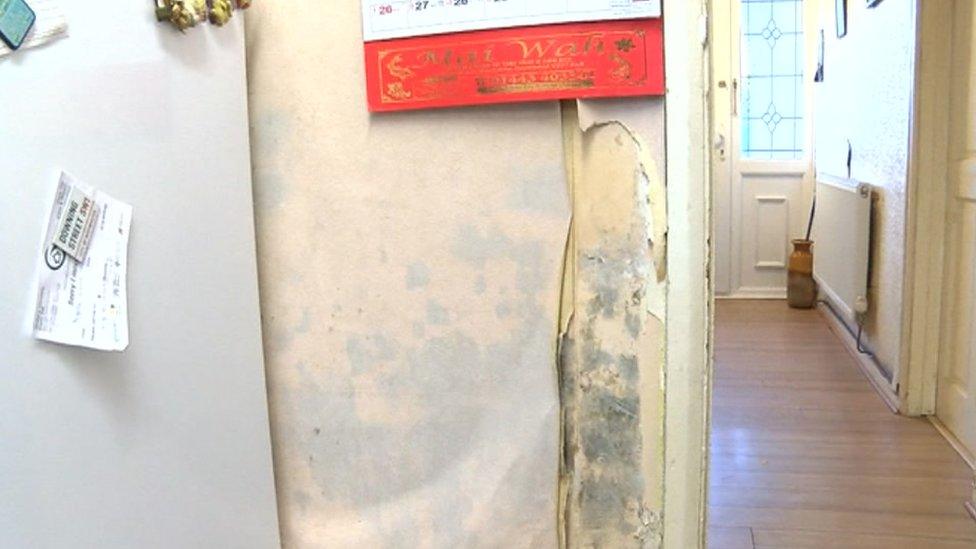
CIGA was set up to help resolve problems and compensate homeowners left out of pocket by botched installations.
A spokesman for CIGA, which was set up to help resolve problems and compensate homeowners, said it was a "reliable product" but that "on the rare occasions things do go wrong"
"In the vast majority of cases, any issues are fixed swiftly and at no cost to the customer," the spokesman said, adding it offers a independent dispute resolution service for any customers unhappy with the result of their case.
- Published18 April 2017

- Published30 September 2016
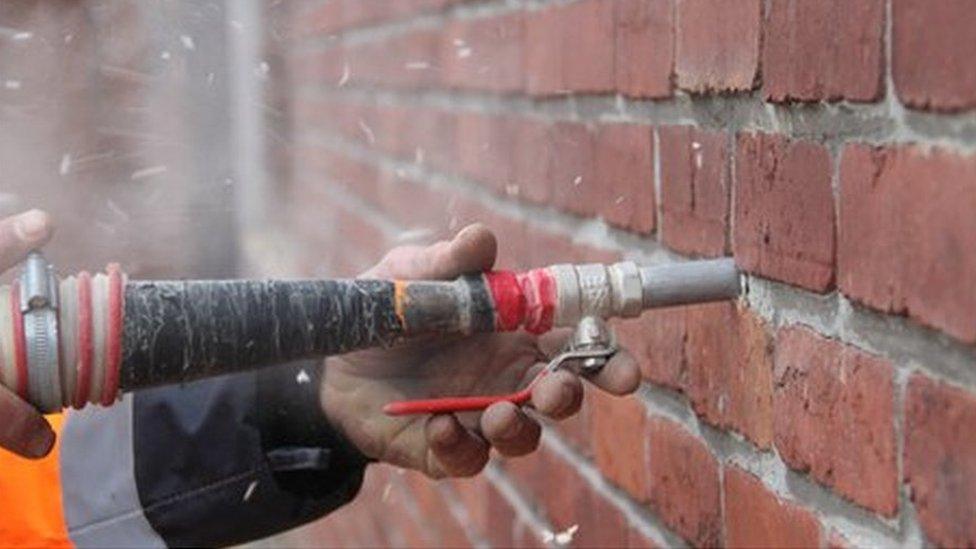
- Published28 August 2015
